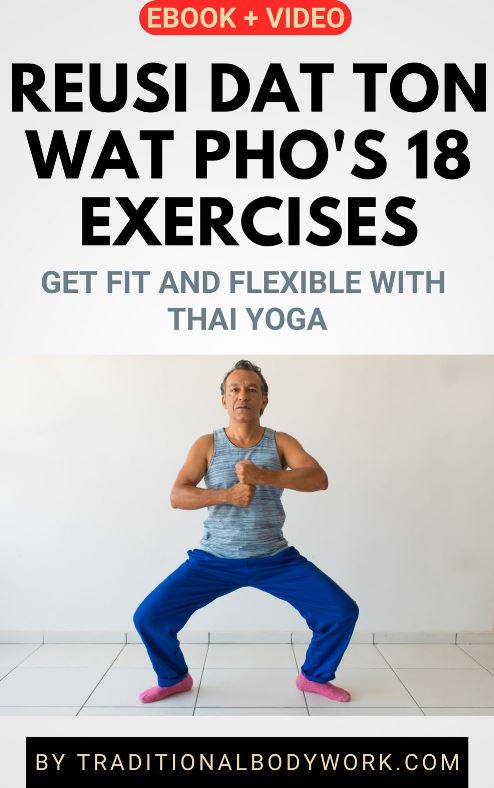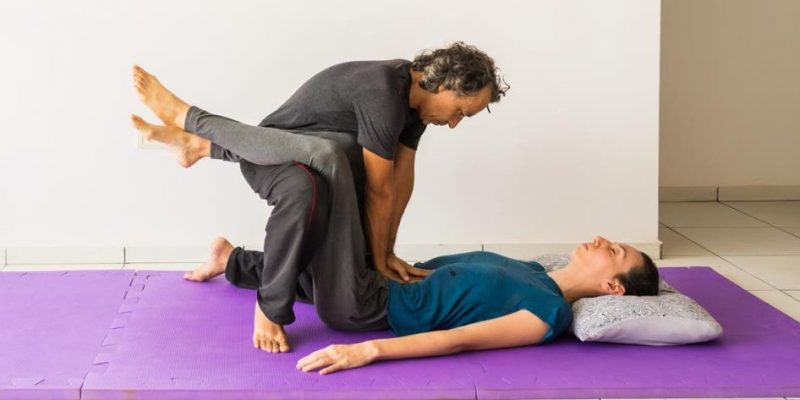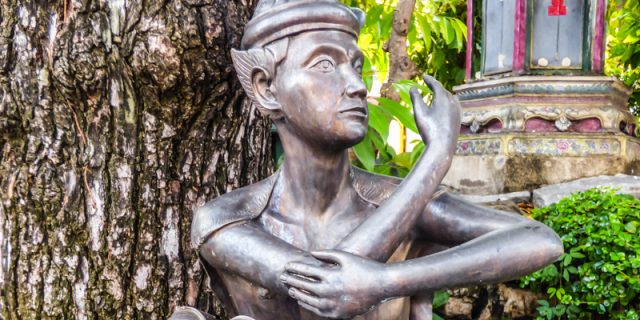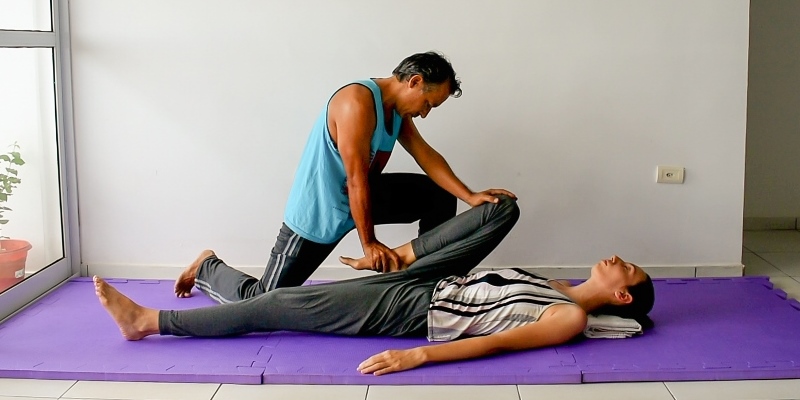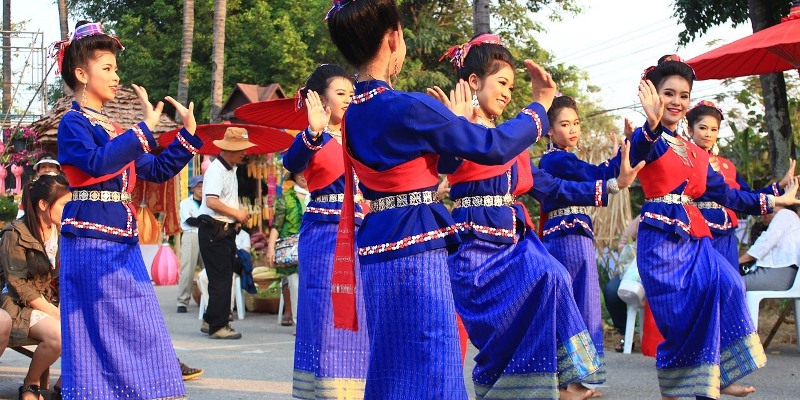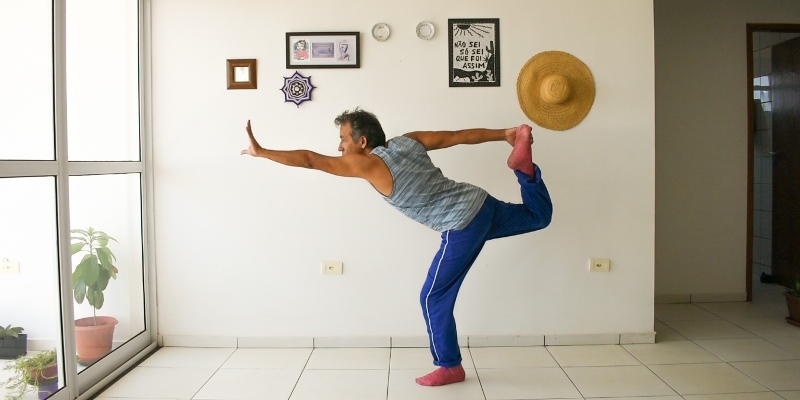
In this post, I’ll discuss Exercise No. 9 (see lead picture of this post) of Wat Pho’s 18 Ascetic Self-Stretching Exercises. And yes, I agree, the exercise has quite a hallucinating name: Relief of Chest Pain at the Cardiac Region Caused by Abdominal Distension.
Mind that the official descriptions of Thai Rue-Si Datton exercises are based on (translated) info found in the Reusi Dat Ton Samut Thai Khao, a Thai manuscript dating from 1838, which contains 80 Reusi Datton drawings, and poems i.e. descriptions attributed to each exercise drawing.
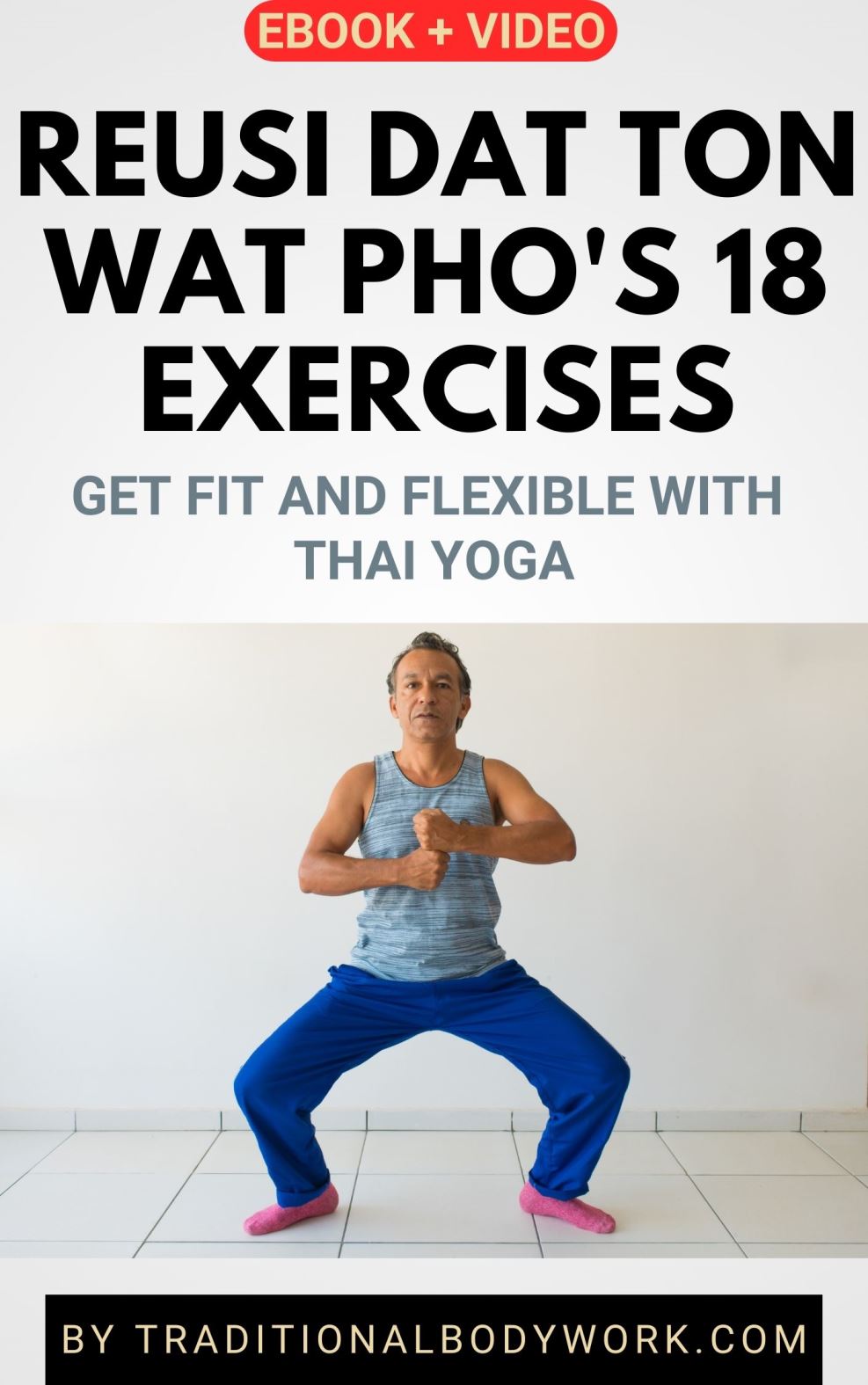
According to the exercise description the main relief this exercise brings is relief of chest pain. The cause of this type of chest pain at “the Cardiac Region” is thought to be abdominal distension. Distension in medical terms usually refers to an enlargement, dilation, or ballooning effect.
Now, abdominal distension (also written abdominal distention) happens when air, gas or fluids accumulate in the abdominal region causing its expansion, what we would usually call “feeling bloated.” The causes can vary largely, and we will not go into those right now. In any case, abdominal distension is a feeling of fullness, abdominal pressure, sometimes also nausea, pain, or cramps. It can also cause upward pressure on the diaphragm and lungs, which in its turn can cause shortness of breath and … chest pains.
Thus, it’s thought that this exercise helps relieve chest pains, but then again also knee and leg discomforts. As is the case with many Reusi Dat Ton stretching exercises, there are often a variety of health benefits. In fact, this exercise opens up the muscles in the chest, abdominal, and hip region, strengthens the legs (front of the thighs, feet, ankles, and knees), and exercises balance i.e. equilibrium. Mind that one needs to do the exercise alternately on one, and then on the other leg.
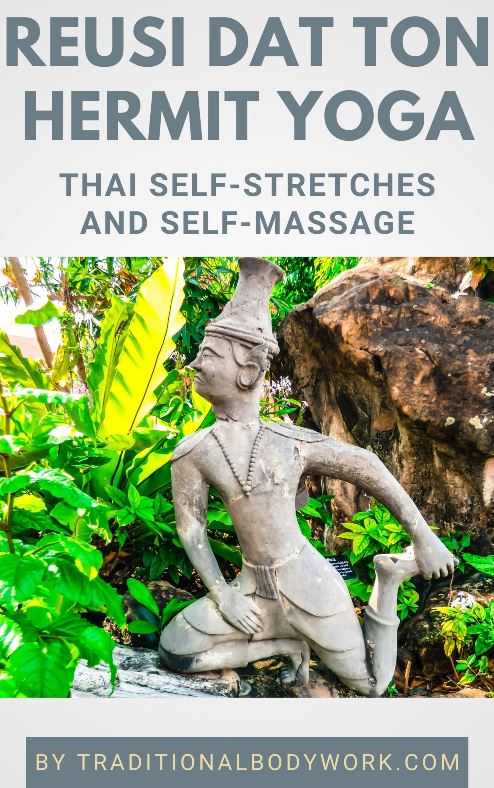
In more anatomical terms: the exercise stretches the Pectoralis Major and Pectoralis Minor (pectoral chest muscles opener due to the upward/forward movement of the arm, and because of the other arm stretching backwards while holding the foot), Rectus Abdominis (due to the Yogic “bow pose” and the upward/forward stretch of the arm), Hip Flexor group (bow pose), Quadriceps Femoris (bow pose), Biceps Branchii, and Tibialis Anterior muscles.
The exercise trains and strengthens the Quadriceps Femoris (bending and leaning on the leg), Hamstrings, Knees, Gastrocsoleus Complex, Tibialis Anterior, and the Gluteus (Glutes) muscles.
There are some precautions and contraindications that need to be observed before doing this exercise: herniated spinal discs, osteoarthritis of the knees, serious knee problems, vertigo and unstable blood pressure, chronic muscle injuries and pains, standing balance i.e. equilibrium issues. One also needs to be careful after a hip or knee operation.
You can watch a demonstration of this exercise in our YouTube video, which is a sample of our Video Workshop (photo book + video) Reusi Dat Ton – Wat Pho’s 18 Exercises | Workshop.


